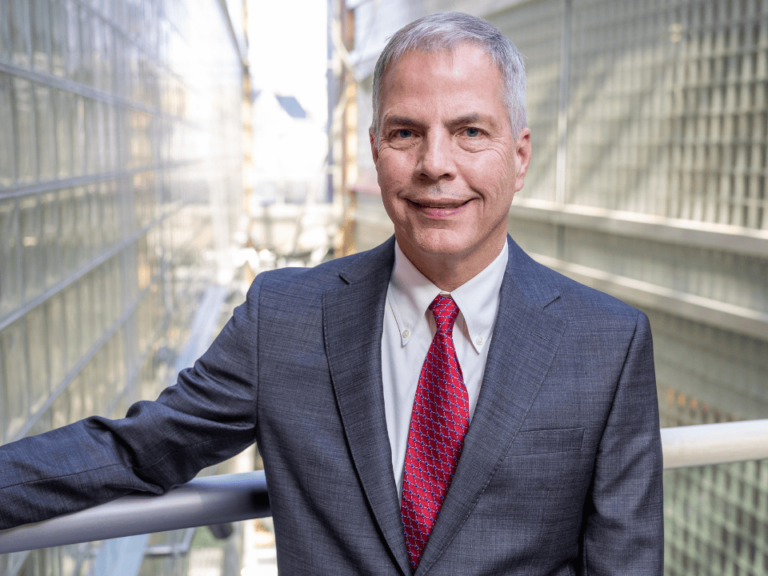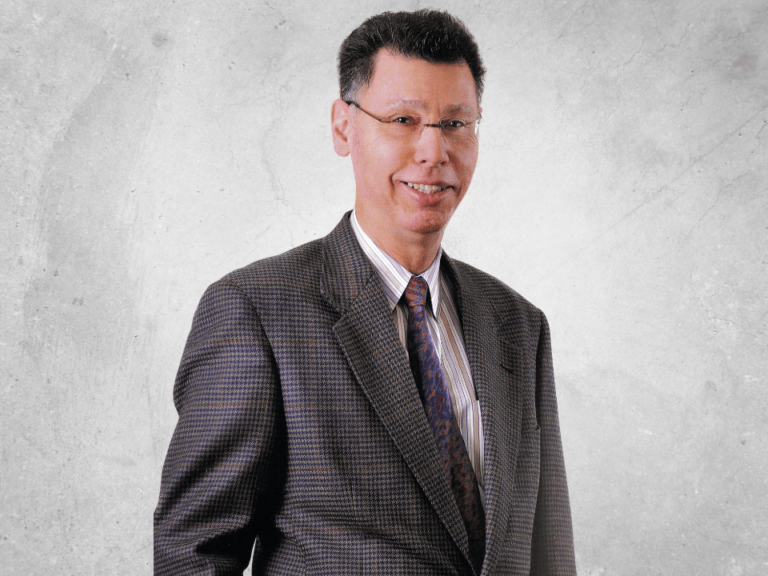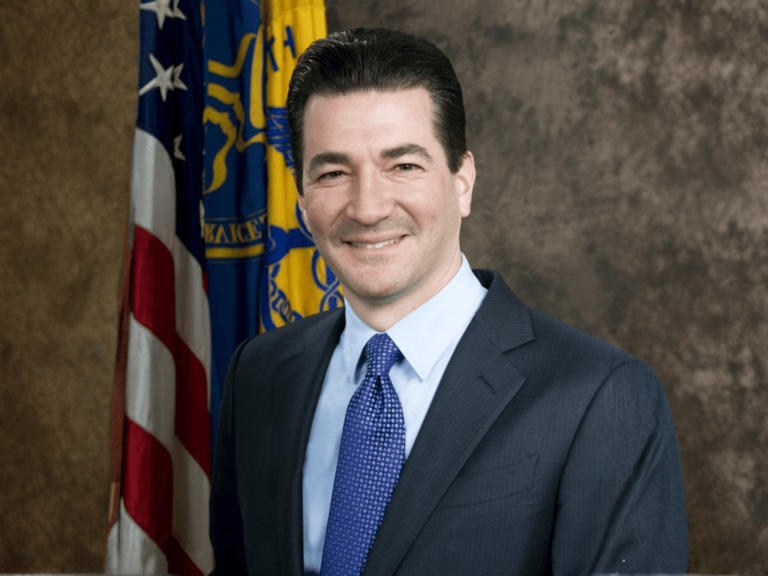This is the second installment of the Cancer History Project’s series in honor of Cancer Survivors Month.
The interviews are conducted by Deborah Doroshow, assistant professor of medicine, hematology, and medical oncology at the Tisch Cancer Institute, Icahn School of Medicine at Mount Sinai, who is also a historian of medicine and a guest editor of the Cancer History Project in June.
Last week’s oral history with Judy Orem, a CML patient who was part of the initial clinical trial for Gleevec, is available here.


At 25, Elizabeth Carner was diagnosed with stage 4 colon cancer.
“I mean, the first thing that went through my head was just looking at mom and dad, and it’s just like, OK, well, where did all the other stages go? Because we literally went from my colonoscopy as being OK to everything’s not OK,” Carner, now 33, said to Deborah Doroshow, an oncologist at the Tisch Cancer Institute, Icahn School of Medicine at Mount Sinai.
At the time, Carner, who studied theater and stage management as an undergraduate, had a coveted job at an equity theater, Cincinnati Playhouse in the Park. She hadn’t thought much of her recent weight loss before the diagnosis—going from 175 to around 150—chalking it up to the hustle of theater life.
Then, one day, Carner fainted at work.
“I was bleeding out,” she said. “When I was in the bathroom, just trying to figure out how to manage this, I looked in the mirror and I realized that my face was ghost-white. I’m pale to begin with—with the genetics of the red hair and blue eyes and everything under the sun, burn like a lobster, whatnot. But for me to see this and just be like, ‘Oh, shit, I need to talk to somebody about this.’”
Carner knew members of her family were carriers of Lynch syndrome, a genetic mutation that increases the risk of colon, endometrial, and other cancers. Her grandmother had survived ovarian cancer in the 1950s. Her father had been a survivor of stage I colon cancer. Great uncles and second cousins had all experienced stage 1 or 2 cancer—all when they were over the age of 45.
Her family could even trace its history with cancer back to around 1800, to a relative they nicknamed ‘Cancer Catherine’—“We believe that she is the one that had married into the family and brought it along.”
Over centuries, cancer became a part of the family lore.
“It was one of those things where you get told about family history, but you think it’s never going to happen to you. It didn’t quite click,” Carner said. “I knew that there was colon cancer history in my family, which we had openly talked about. But the thing was, it didn’t even register for me, because all of those instances—the age was 45. I think at the time, the screening age was 50 and since then they’ve knocked it down to 45, but it wasn’t even on my register.”
Carner had been screened for colon cancer pretty much yearly. She had a colonoscopy just before she moved away from her family in Rockford, IL, and had another since then in Cincinnati. Doctors had previously found polyps, but they were benign.
The bleeding subsided after Carner went to the emergency room, but continued at home. She knew another colonoscopy was necessary.
“This go around, the doctor went in and found it. Apparently my cancer was not on the inside of my colon, it was on the outside,” she said. “How they explained it to me, is that the inside was the flower—the polyp was the flower, but on the other side was all the root.”
Thus began a months-long odyssey of six hour drives to Mayo Clinic, where Carner’s grandmother had previously been a patient.
“To be perfectly honest, I think those were hard because you’re doing the six hour drive up. And when you have six month appointments, or three months appointments, weather turns crappy and everything,” Carner said.
The combination of cancer and the aggressive treatment she opted for meant that it was difficult for Carner to keep food down. Her weight dropped from 150 to 119—on her 5’11 frame.


“I had to tell my friends, literally everything is tasting like cardboard. I would choke it down if I could, but it’s not staying,” she said. “I never, never, never want to have to compare myself to a Holocaust victim, but I remember looking in the mirror one time and being like, ‘Oh, shit, I’ve seen these photographs before.’
“Seeing your pelvic bones when you come out of a shower is—no shakes. I can’t listen to weight watching radio ads anymore. I can’t do it. They say lose so many pounds in so many months, I’m like, that’s not healthy. Don’t.”
The treatments physically exhausted Carner. Her mother insisted that she take naps so that she could have energy when friends came to visit.
“But the thing was, a lot of the times it didn’t quite work because I’m one of those people where I get excited to see them,” she said. “A lot of on-the-mattress savasana, more or less. Which also is another reason why—morbid personality that I am—I completely understand why they call it ‘corpse pose’ now.”
Mentally, it was difficult for Carner to see college friends embark on their careers, relationships, and personal lives.
“The thing that probably hurt more than the surgical procedure to remove the darn cancers, was going up on social media,” she said. “And mind you, [I had] a recent gut wound, in which they always say hurts worse than any other type of wound. And it may be just the psychology. But I probably had more regret and hard time coping with the fact that every time it felt like I turned around—I was seeing this from one of my friends. ‘Oh, look at the ring. Oh, look at this. Oh, look at how my life’s taking off.’
“And here I am, having to put my whole life and dreams on pause because of the fact that I got something that I didn’t ask for,” Carner said.
Carner found that her family’s to-the-point nature, and her snarky attitude at doctor’s visits, kept people upbeat.
“The medical team really appreciated me being the morbid, smart-alecky, sassy, redhead that came in,” she said. She’d say things like—“‘Hey, I was really happy to see you earlier. I wish I didn’t have to, but I’m really happy to see you. I’m glad that you’re taking care of me.’”
At the same time, few people could understand how Carner was feeling.
“It’s hard to say that anybody really, I felt, truly got it. Because one, I didn’t want them to get it. Because if they would’ve gotten it, they would’ve gone through the same hell that I went through,” she said. “I think it was very telling when I told my parents: ‘OK. I remember my bullies from elementary school, and from high school, and all that stuff.’ I was like, ‘I would not wish this on them.’”
If anything, Cancer Catherine was a comfort.
“The family history thing is monumental, especially when you go to a gravesite and you think about… ’Oh, crap. Man, they might have actually experienced the same thing I have,’” she said. “I mean, it’s mixed emotions, but more or less it’s not anger. It’s not sadness. It’s more or less like, ‘Dude, man, I feel like you.’”
TJ, a friend of Carner’s mother, was bedridden with lung cancer. She understood.
“I went to go visit her, and she was talking about the treatment and the pain she was in, and then talking about morphine and all that stuff. And I was just like, ‘I’m sorry, I know you’re in a lot of pain, and I really don’t know how to,’” she said. “She’s like, ‘I know you do.’ This is what I mean, talking about, I want my friends to get it, but I don’t, because that was the hardest thing of just both of us knowing that each of us felt that pain.”
In January 2015, doctors told Carner and her family that she had six weeks to live. She recalls her father giving her a choice: “Do you want to try and go back up to Mayo or do you not feel like you want to?”
Though faced with snow and ice and rapidly deteriorating health—she had been in a wheelchair by that point—Carner decided to go. That’s when Carner first heard about the clinical trial that would eventually cure her cancer.
“The doctor we were seeing had a colleague, and he was just like, ‘Hey, my colleague is over at Ohio State, and they’re part of a study that’s for this new immunotherapy drug. And they’re trying to try it out on a couple of the cancers. It’s mostly been used for lung cancer,’” Carner said.
The drug has since become known as Keytruda (pembrolizumab), and doctors thought Carner might be a good candidate because of her specific genetic mutation—MSI (microsatellite unstable)-H.
When she arrived at the desk of Richard Goldberg, a GI oncologist, who at the time was the physician-in-chief at The Ohio State University Comprehensive Cancer Center, Carner had tumors in her neck, breasts, and abdomen. She had previously had masses on her knee and her brain.
When Goldberg previously spoke with The Cancer Letter about Carner’s case, he described her response to Keytruda as “The Lazarus effect” (The Cancer Letter, Oct. 13, 2017).
“She had exhausted conventional therapy, she came in in a wheelchair, she just had her femur pinned…she was so depressed, she could barely hold a conversation,” he said. “Here is the 26-year-old who is dying of advanced cancer.”
Carner started the trial in February, and within a few months had gone from a wheelchair to crutches—only requiring the wheelchair when she tired easily. By April or May, doctors had found that the drug was working.
“It was rather drastic,” she said. “I mean, for Dr. Goldberg to see me, when I first walked in, I didn’t even walk into his office. It was like, I rolled into his office with my family, because I had my crutches and I was in a wheelchair. I was tired. I couldn’t really hold my head up as much as I was trying. Posture is not a forte when you’re sick.”
How could she tell the drug was taking effect?
“I don’t want to necessarily say my mood was improving, but it was more or less the numbers, the blood counts and all the blood draws,” she said.
About a year out from starting the trial, doctors didn’t find any evidence of cancer. Carner remains in complete remission—eight years from when she was first diagnosed.
This column features the latest posts to the Cancer History Project by our growing list of contributors.
The Cancer History Project is a free, web-based, collaborative resource intended to mark the 50th anniversary of the National Cancer Act and designed to continue in perpetuity. The objective is to assemble a robust collection of historical documents and make them freely available.
Access to the Cancer History Project is open to the public at CancerHistoryProject.com. You can also follow us on Twitter at @CancerHistProj, or follow our podcast.
Is your institution a contributor to the Cancer History Project? Eligible institutions include cancer centers, advocacy groups, professional societies, pharmaceutical companies, and key organizations in oncology.
To apply to become a contributor, please contact admin@cancerhistoryproject.com.














